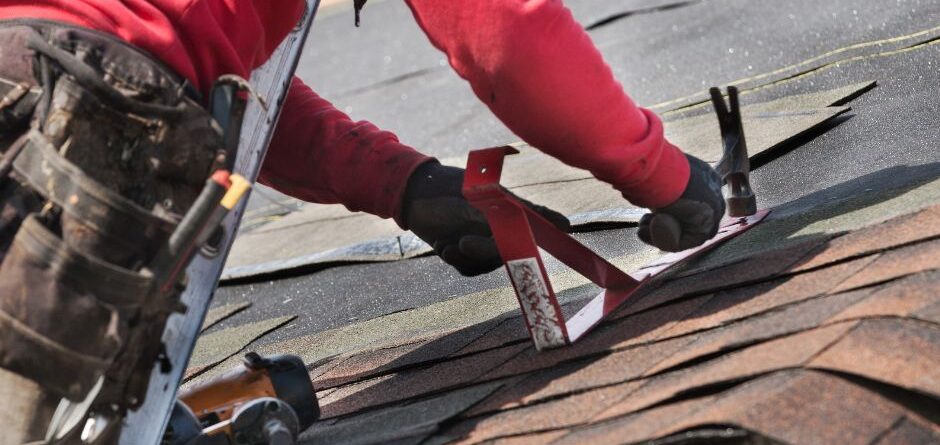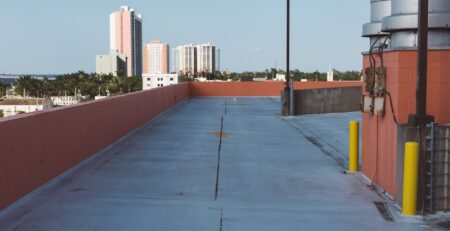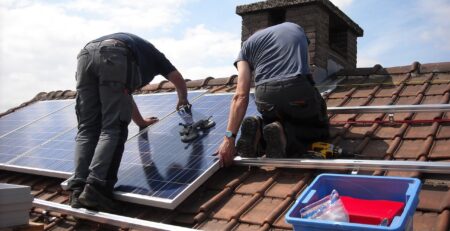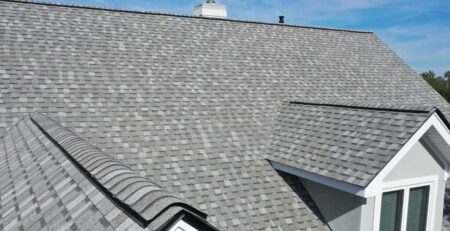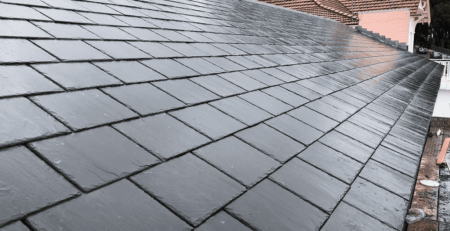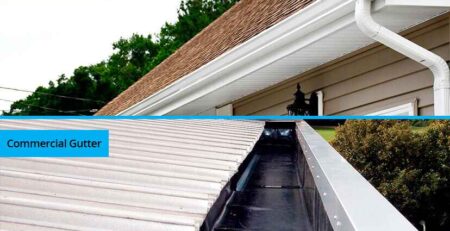Felt Vs. Synthetic Underlayment
The ongoing debate in selecting the appropriate underlayment for your roofing project revolves around the choice between felt and synthetic options.
Felt underlayment, a traditional choice, has been used by professional roofers for decades, while synthetic underlayment provides a more modern alternative. The differences in material composition, performance, and durability between these two options are worth exploring.
However, before making a decision, several factors need to be considered. So, which underlayment is the better choice?
Let’s delve into the details and find out.
Traditional Choice: Felt Underlayment
Felt underlayment is a commonly chosen traditional option for roofing installations due to its long-standing reputation for durability and reliability.
When it comes to the installation process, felt underlayment is relatively straightforward.
It is typically rolled out and nailed or stapled to the roof deck. The overlapping layers provide a protective barrier against moisture and help to prevent leaks.
Regarding cost comparison, felt underlayment tends to be more affordable than synthetic options. This makes it a popular choice for budget-conscious homeowners or contractors.
However, it is worth noting that felt underlayment may not offer the same level of performance and longevity as synthetic alternatives. Despite this, many still opt for felt underlayment due to its familiarity and proven track record in the industry.
Modern Alternative: Synthetic Underlayment
As the roofing industry evolves, homeowners and contractors increasingly turn to a modern alternative known as synthetic underlayment.
Synthetic underlayment offers several advantages over traditional felt underlayment. Initially, it possesses a lightweight nature, facilitating easy handling and contributing to a faster and more efficient installation process.
In contrast to felt underlayment, synthetic underlayment is resistant to tearing or wrinkling, guaranteeing a smooth and consistent surface for the installation of roofing material.
Additionally, synthetic underlayment protects against water penetration and acts as a vapor barrier, preventing moisture buildup in the roof. It is also UV resistant, reducing the risk of degradation from sun exposure.
Overall, synthetic underlayment offers superior durability and performance, making it a popular choice among homeowners and contractors.
Material Composition Differences
Synthetic underlayment differs from traditional felt underlayment in terms of its material composition. Here are four key differences to consider:
- Environmental impact: Frequently crafted from recyclable materials, synthetic underlayment plays a role in waste reduction and supports sustainability initiatives. Felt underlayment, on the other hand, is typically made from asphalt-saturated paper, which may have a higher environmental impact.
- Cost effectiveness: Synthetic underlayment tends to be more expensive upfront than felt underlayment. However, it offers better durability and longevity, potentially saving costs in the long run by reducing the need for repairs or replacements.
- Water resistance: Synthetic underlayment is designed to be highly water-resistant, providing additional protection against moisture infiltration. Felt underlayment, while offering some water resistance, may not be as effective in preventing water damage.
- Installation ease: Synthetic underlayment is usually lighter and easier to handle during installation compared to felt underlayment. This can save time and effort for roofing professionals, making the installation process more efficient.
Consider these material roofing composition differences when deciding between felt and synthetic underlayment for your roofing project.
Performance and Durability Comparison
When comparing the performance and durability of underlayment options, it is essential to consider their long-term effectiveness in protecting the roof from various elements. Both felt and synthetic underlayment have advantages and disadvantages in performance and durability.
Felt underlayment is known for its traditional use and affordability. It is relatively easy to install, making it a popular choice for many roofing projects.
However, synthetic options may be more durable than felt underlayment. It can tear or puncture more easily, especially during installation, which could compromise its effectiveness in protecting the roof.
On the other hand, synthetic underlayment is designed to be more robust and resistant to tearing and puncturing. It is commonly made from polypropylene or polyester, providing enhanced durability.
Synthetic underlayment also tends to be more cost-effective in the long run due to its superior performance and longer lifespan.
Factors to Consider When Choosing Underlayment
Given the importance of choosing the proper underlayment for a roofing project, several factors should be considered to ensure optimal performance and durability. These factors include:
- Cost considerations: Underlayment materials vary in cost, so it is essential to determine the budget for the project. Felt underlayment tends to be more affordable compared to synthetic options.
- Installation requirements: Different underlayment materials have varying installation requirements. Felt underlayment is typically installed using nails or staples, while synthetic underlayment often requires adhesive or peel-and-stick application methods.
- Climate and weather conditions: Consider the climate and weather patterns in the area where the roof is located. Some underlayment materials may offer better protection against moisture, wind, or extreme temperatures.
- Longevity and warranty: Evaluate the expected lifespan of the underlayment and the warranty coverage provided by the manufacturer. Synthetic underlayment generally offers better durability and longer warranties compared to felt underlayment.
Thank you for reading this article. Regardless of the type of underlayment you choose, make sure to perform routine roof inspections to check the roofing material, gutters, flashing, and underlayment for any signs of damage that can occur from natural causes such as hail or wind.

